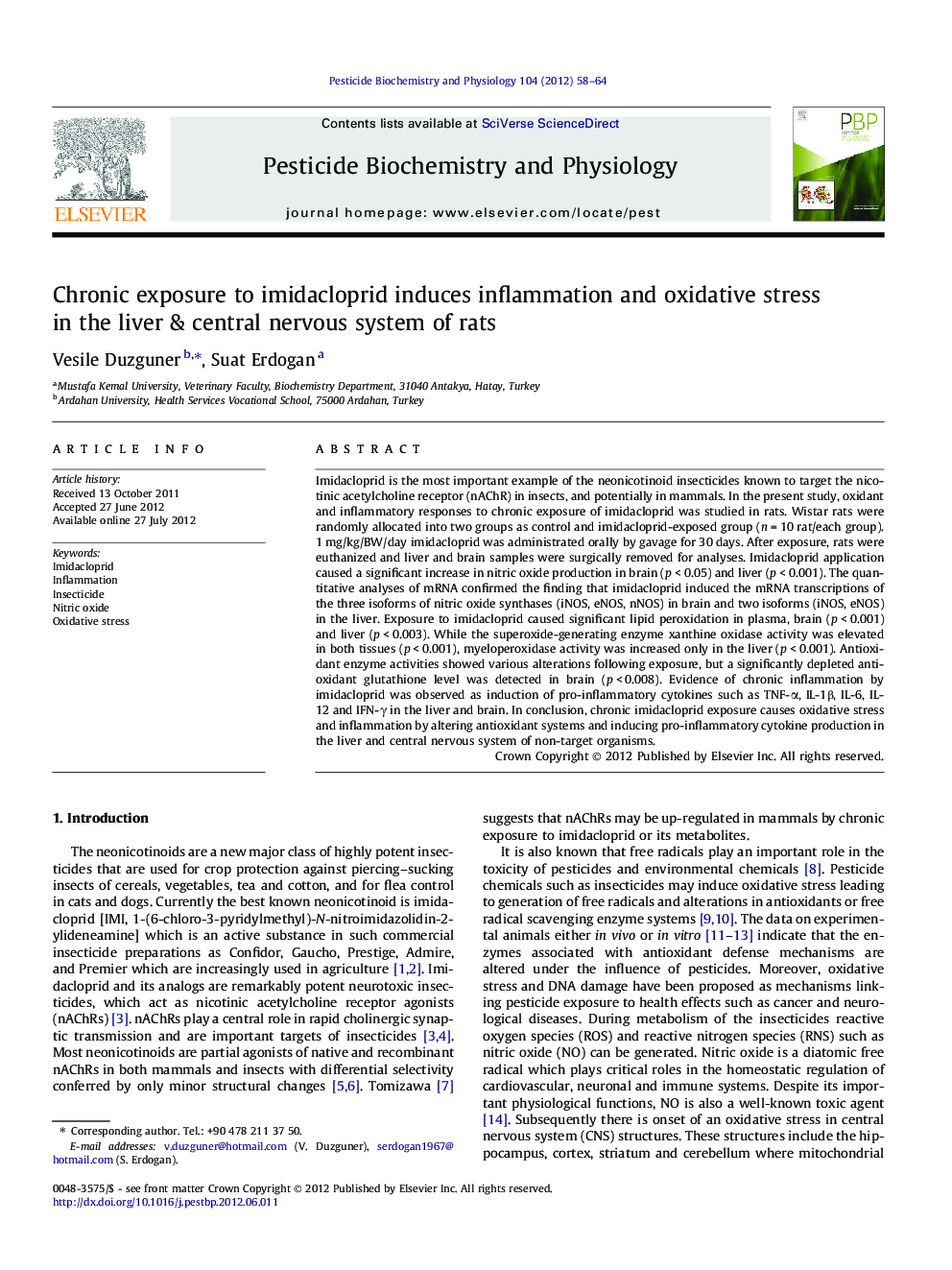| کد مقاله | کد نشریه | سال انتشار | مقاله انگلیسی | نسخه تمام متن |
|---|---|---|---|---|
| 2009411 | 1066663 | 2012 | 7 صفحه PDF | دانلود رایگان |

Imidacloprid is the most important example of the neonicotinoid insecticides known to target the nicotinic acetylcholine receptor (nAChR) in insects, and potentially in mammals. In the present study, oxidant and inflammatory responses to chronic exposure of imidacloprid was studied in rats. Wistar rats were randomly allocated into two groups as control and imidacloprid-exposed group (n = 10 rat/each group). 1 mg/kg/BW/day imidacloprid was administrated orally by gavage for 30 days. After exposure, rats were euthanized and liver and brain samples were surgically removed for analyses. Imidacloprid application caused a significant increase in nitric oxide production in brain (p < 0.05) and liver (p < 0.001). The quantitative analyses of mRNA confirmed the finding that imidacloprid induced the mRNA transcriptions of the three isoforms of nitric oxide synthases (iNOS, eNOS, nNOS) in brain and two isoforms (iNOS, eNOS) in the liver. Exposure to imidacloprid caused significant lipid peroxidation in plasma, brain (p < 0.001) and liver (p < 0.003). While the superoxide-generating enzyme xanthine oxidase activity was elevated in both tissues (p < 0.001), myeloperoxidase activity was increased only in the liver (p < 0.001). Antioxidant enzyme activities showed various alterations following exposure, but a significantly depleted antioxidant glutathione level was detected in brain (p < 0.008). Evidence of chronic inflammation by imidacloprid was observed as induction of pro-inflammatory cytokines such as TNF-α, IL-1β, IL-6, IL-12 and IFN-γ in the liver and brain. In conclusion, chronic imidacloprid exposure causes oxidative stress and inflammation by altering antioxidant systems and inducing pro-inflammatory cytokine production in the liver and central nervous system of non-target organisms.
Figure optionsDownload as PowerPoint slideHighlights
► We analyzed possible chronic harmful effect of insecticide imidacloprid in rats.
► Imidacloprid treatment significantly increased in NO production in brain and liver.
► Imidacloprid enhanced oxidant enzyme activities, lipid peroxidation, decreased GSH levels.
► Exposure to imidacloprid was also induced pro-inflammatory cytokines.
► Chronic exposure to imidacloprid may have toxic effects on nontarget mammals.
Journal: Pesticide Biochemistry and Physiology - Volume 104, Issue 1, September 2012, Pages 58–64